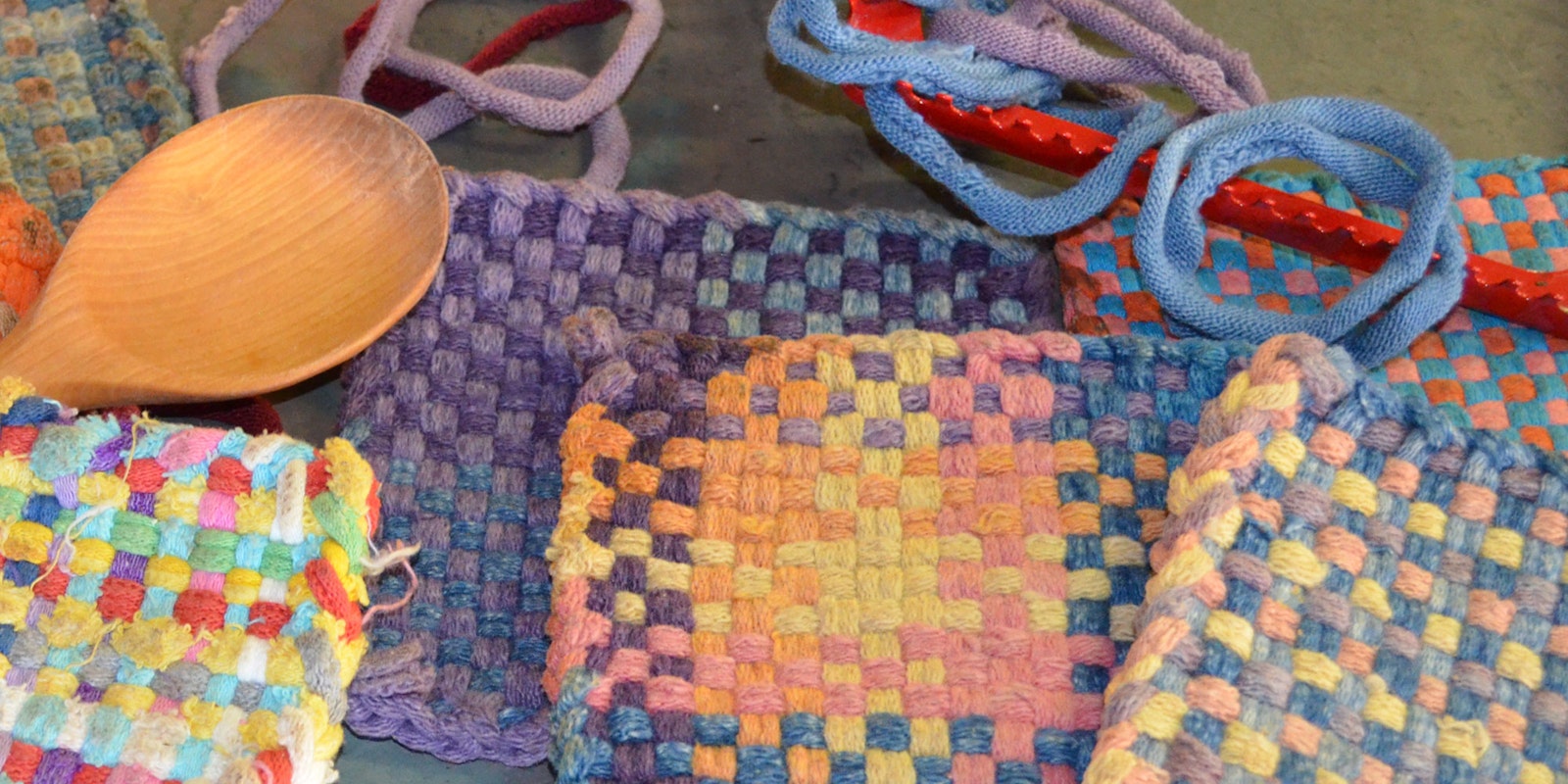As the holiday season approaches each year, we’re bombarded with hints, recipes, and strategies for producing the ideal feast, whatever that is. What gets me through the ordeal, though, is not what you might expect.
There’s a drawer in my kitchen right next to the stove that is crammed with jersey-loop hot pads (you can see some of them in the image above). Most of them have been holiday or Mother’s Day presents over the years from my kids and grandkids, and I love them all—first, because they’re the best hot pads; second, because each is the creation of someone who is special to me. I use them every day and especially on high-pressure holidays.
But there’s something else going on here. This humble jersey-loop loom, designed to use off-cuts of factory-woven socks, has been around since the 1930s. It’s been used by thrifty housewives and, even more, by clever children. With a little practice, you can weave a hot pad in ten minutes. The loom has gotten a lot of use, but little respect.
 Explore color by dyeing your potholder loops as shown in the book Nature's Colorways from Long Thread Media. Green tea, pickling alum, onion skins, and a dab of saffron result in cheerful, almost edible colors on cotton jersey loops. Photo by Joe Coca
Explore color by dyeing your potholder loops as shown in the book Nature's Colorways from Long Thread Media. Green tea, pickling alum, onion skins, and a dab of saffron result in cheerful, almost edible colors on cotton jersey loops. Photo by Joe Coca
Suddenly, though, jersey-loop hot pads and the making thereof are hot. Look on Facebook, and you’ll find multiple groups of hot-pad weavers with up to 10,000 members, posting their creations all day long. Try to buy the looms, or the loops, online, and you’ll often find that they are back-ordered for weeks or months. Check on Amazon, and you’ll see that Pot Holder Loom Designs is #2 among weaving books, and Radical Potholder Weaving is #5! Seriously!
I look at the output of these thousands of weavers. Some weave for volume, dozens or scores at a time, to sell or give away, but some weave for invention. Maybe they’ve never even seen a floor loom, but they’re inventing color-and-weave effects, twills, and overshots in the small loom in their laps, with just a wire hook and their fingers. Think about the basic 18-peg loom. You “warp” it with 18 loops, and then go over and under with 18 loops. Elegantly simple. Or you weave in between each loop, doubling the number of warps. You can skip over loops or half-loops to make half-basket weave or twills. The twills can be plain or fancy. You can mix it up with color and structure, and the limits are beyond my ability to calculate. And you end up with a four-selvedge wonder.
Many, many years ago Handwoven put out a challenge to its readers: teach a child to weave a jersey-loop hot pad. The idea was that learning the simple over-under basics and producing a truly useful object in a short amount of time could lead a child down the path to weaverhood. I don’t know how that worked, but I do know that hundreds of our readers, and literally thousands of children, did indeed weave a hot pad. I wonder how many of them will end up next to somebody’s stove this Thanksgiving.
If you’re looking for an activity to keep the small children or large adults in your life busy this holiday season, consider teaching them to weave a jersey-loom hot pad.
—Linda
Not Your Everyday Potholders
Photo by Lucy Morris
When words deserted Gene Morris, creative potholder weaving gave him a sense of purpose. Read about his work.

